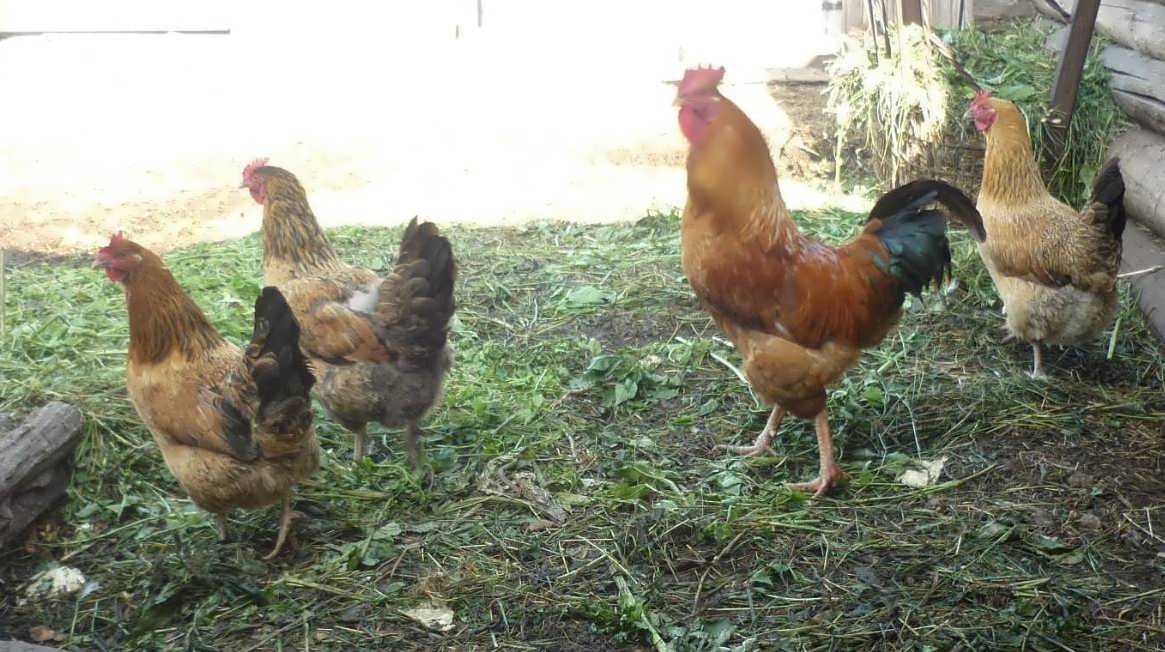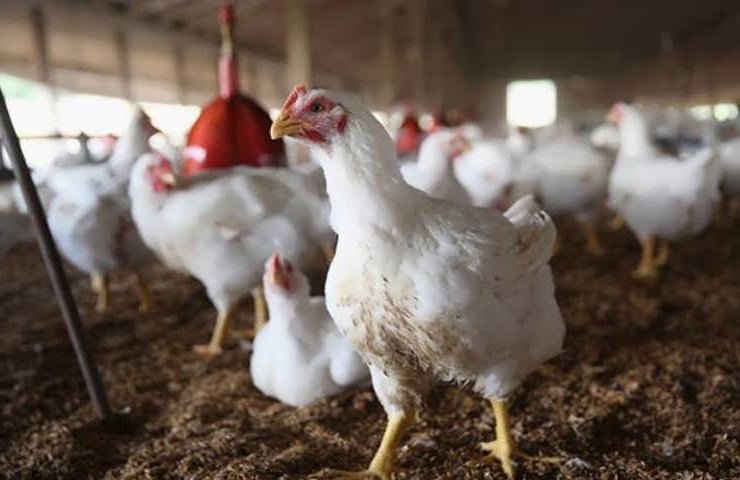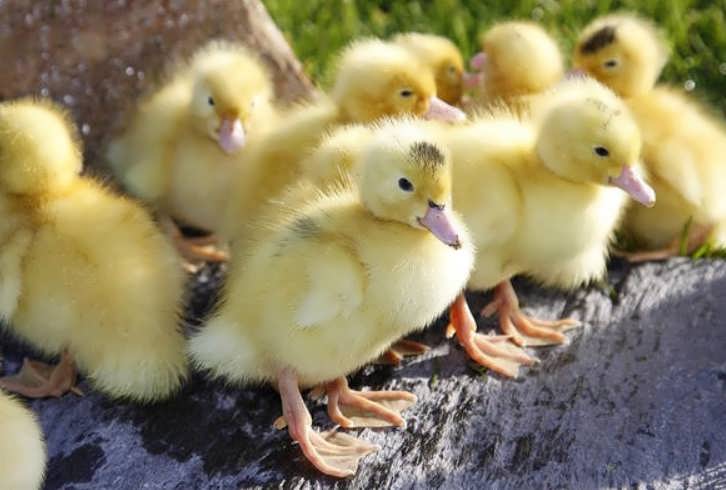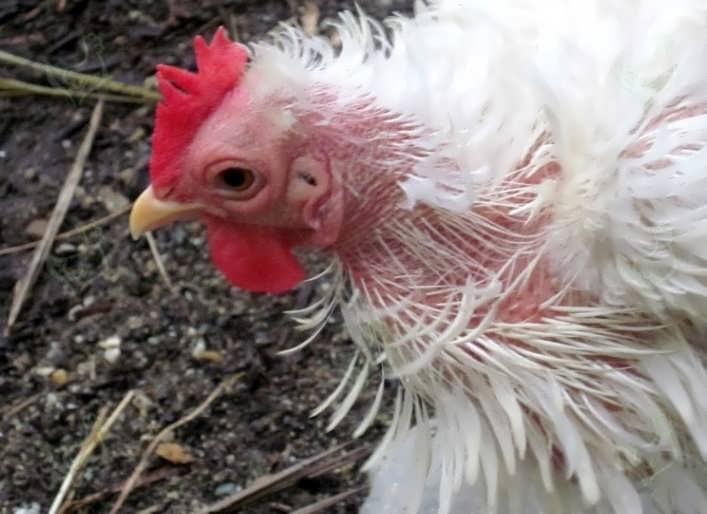Novice poultry farmers are wary of buying day old goslings, because of the danger of death , but this is completely in vain. Having figured out how to feed diurnal birds and other age groups, you can easily raise a decent bird.
When thinking about feeding issues, one cannot rely on stories and conjectures, only a strict adherence to the feeding ration will allow you to save the livestock by 100%.
Feeding goslings
Geese are different from other farm birds, and their diet consists of 70% green mass. Before buying goslings, you should think about whether you can provide bird grazing or provide green mass.
Age group up to 10 days
These goslings are very small and defenseless. If the question is how exactly to feed the newly hatched, newborn goslings, how to choose the right diet for them, then there is no need to worry. On the first day, goslings do not need food. The remains of the yolk in their body continue to dissolve and nourish the body.
The hatched goslings are transferred under the lamp for drying and drinkers with clean water are immediately installed. By the end of the first day, feeding begins. If goslings are purchased, then food should be offered immediately.
What to feed?
It’s not worth thinking about what to feed little goslings, their diet will not differ from chickens and ducks. The basis should be:
- boiled eggs;
- curdled milk;
- cottage cheese;
- corn grits;
- Wheat groats.
From the first days of life, goslings are offered all the listed feeds. 1 boiled egg is enough for 10 heads, cottage cheese 5-6 g per head. Yogurt is poured into a drinker at the rate of 10 g per head. (Water by itself in another drinking bowl). A mixture of cereals is poured into the feeder and fed ad libitum (the feeder must always contain food).
By the third day, green fodder is added to the diet. Herbs should be fresh, juicy, young, tender. Preference is given to legumes:
- clover;
- alfalfa;
- sainfoin;
- Vika.
From garden herbs, you can feed grass knotweed (knotweed), dandelion leaf, bluegrass meadow, creeping couch grass, timothy.
There are no standards for green grasses. The gosling will not overeat, and you need to feed plenty of food. Multiplicity 5-6 times a day, alternating porridge and grass.
From the age of five, in addition to dry cereals, it is advisable to give a mash (porridge). At the same time, the cereals are not boiled, but only slightly boiled down. Instead of water, you can take whey or yogurt. Such food is prepared in the morning, and fed twice. It should not be left overnight (so that there is no souring).
From this age, cottage cheese and an egg are removed from the diet, and yogurt is left for up to 10 days. During this period, a feeder with river sand and shells is substituted, the bird rations these additives itself.
Weekly goslings begin to accustom to grazing herbs. Chicks nibble grass with pleasure. The bird will determine the norm itself, but the owner should take care of the quality. In the spring, when goslings hatch, the grasses are still young and juicy, and the food supply is represented by nature itself.
Age group from 10 days to a month
The composition of the diet is the same, and the norm is calculated judging by the feed intake. For 3 weeks, it will certainly be more, but there is only one criterion - the grain feeder should be filled, and the mash should be eaten in two stages.
Care and feeding of two-week-old goslings is not difficult. From this age, the porridge is mixed with:
- meat and bone meal or fish meal 2-3 g per head;
- sunflower meal 4-5 g per head;
- fodder yeast 1-2 g per head.
Feeding and maintenance for the first 3 weeks is not problematic, however, all feed must be fresh, without signs of spoilage.
Monthly goslings - what to feed?
During this period, the diet should be changed. If in the first weeks there was more corn, then it should be reduced further. Up to 10% should fall on the share of corn, or even completely removed from the diet.
Barley is being introduced into the feed. This feed has a good effect on growth, fattening and weight gain. As part of the diet, it should be within 30%. The basis, as before, will be wheat.
Monthly goslings are no longer steamed with mash, but made raw. For this:
- the grain mixture is strongly crushed (to coarse flour);
- pour into a container;
- fill with water;
- stir;
- let it brew for 0.5-1 hour.
Feed fresh. You can not prepare the mixture in the evening. At high temperatures, the mash can turn sour.
Add to the finished mixture:
- salt - in the calculation of 0.5 g per head;
- sunflower meal 5-7 g per head;
- fodder yeast 7-8 g per head.
Goslings in 1 month should add feed fat to the diet at the rate of 3 g per head. As such, for goslings at home, you can use internal pork fat (lard).
A special role during this period is played by the level of calcium and phosphorus in the diet. Yogurt and cottage cheese have already been canceled, but there are no other sources of these trace elements. That is why, meat and bone or fish meal should be introduced into the diet at a dose of 5-6 g per head.
Age 9-26 weeks
During this period, the diet should be selected according to the following recipe:
- wheat 13% of the diet;
- barley 50%;
- sunflower meal 2%;
- fodder yeast 4%;
- meat and bone meal 4%;
- fodder fat 4%.
From this age, bran begins to be introduced. Do this gradually, starting with 3-4 5 of the diet, and bring it up to 10%.
The basis of the diet during this period is green fodder. In addition to herbs, you can feed grated beets, carrots, turnips, turnips, cabbage leaves, Jerusalem artichokes.
In order for geese to grow quickly, you need to take care of the constant availability of grain feed in the feeders. Geese will regulate the amount of green fodder and concentrated fodder on their own.
Compound feed in the diet
Modern compound feeds, in addition to cereals, contain:
- antibiotics;
- stabilizers;
- substances that prevent the oxidation of feed and the growth of fungi;
- preservatives.
If we talk about home feeding, environmentally friendly poultry, to obtain high-quality meat, then compound feed is not acceptable. However, for beginner poultry farmers who are afraid to make a diet on their own, you can use this type of feeding.
Compound feed for goslings, as a rule, is not for sale. If you request such feed in the store, they will offer "For ducks and geese." Since the diets for this bird are still different, it can be used for 20 day old goslings, but until this age it is better to feed as prescribed above.
Feeding norms are approximately as follows:
- 4-7 weeks - 220-320 g per head;
- 8-10 weeks - 340 g per head.
Geese are not a voracious bird, the main thing for them is grass, but in order for them to gain weight, grain feed must be highly nutritious.
What not to do
Goslings are a gentle creature and getting poor-quality feed into the feeder will immediately lead to diarrhea, and then to death.
If you make a list of what you can not feed, then it will be like this:
- salty (excess can lead to poisoning and death);
- sour;
- rotten;
- moldy;
- musty.
For rapid growth, goslings should be fed ad libitum and good-quality feed. Don't give goslings anything you can't taste yourself.









Breeding goslings actually has certain nuances and difficulties, and their proper feeding is a very important aspect that you should pay attention to. It’s just that at the beginning of my business, as soon as I started breeding them, I fed them incorrectly, as a result, the result was such, poor growth, reproduction is also not very good. Now everything is fine.
I just started breeding goslings, there were certain problems with feeding, I didn’t know how to properly organize their food. Thank you very much for the correct nutritional norms and in general for advice on how all this should be done for a good result. Of course, everything was corrected and organized correctly.
Geese are really whimsical and you need to know how to feed them properly. And then their breeding will be under threat.
Geese themselves are demanding. If these features are not taken into account, then it will be difficult for them to grow healthy.